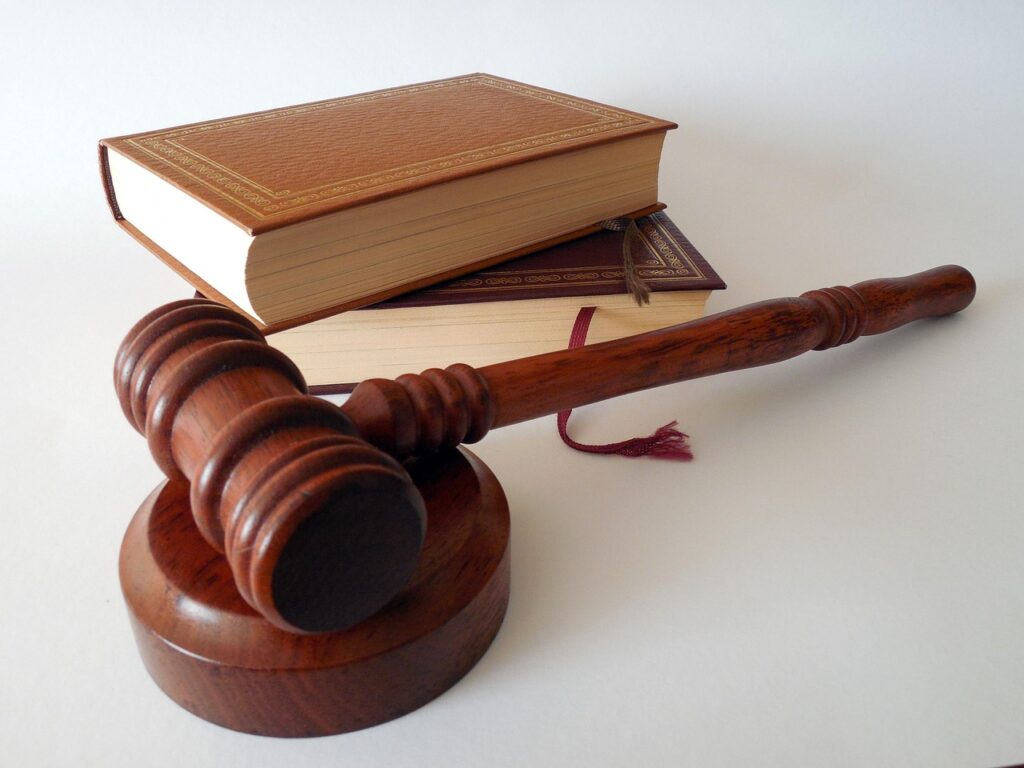Published on: 17th November 2025
Authored by: Mrunmayee Kulkarni
Abhinav Law College, Pune
Abstract
Trademarks are essential in today’s commerce. They help identify where goods and services come from and protect the reputation of businesses. In India, trademark law has developed to meet the need for protecting brands in a competitive market. The Trade Marks Act, 1999 brought Indian law in line with international standards, especially the TRIPS Agreement and the Madrid Protocol. This change broadened the protection available to both local and foreign businesses.
This article looks at the history of trademark law in India, the legal framework set by the 1999 Act, and how courts interpret brand protection. It examines important aspects such as registration, infringement, passing off, and the recognition of well-known marks. The discussion also points out enforcement challenges like counterfeiting, lack of awareness, and delays in procedures. Additionally, it compares India’s practices with international ones to find weaknesses in the Indian system. The article wraps up by offering ideas for improving trademark enforcement to better protect brands. This will help foster innovation, build consumer trust, and support economic growth.
Keywords: Trademark, Brand Protection, Trade Marks Act 1999, Passing Off, Infringement, Well-known Marks, Intellectual Property Rights, India.
Introduction
In today’s global marketplace, a company’s brand is arguably its most valuable possession. A strong brand builds customer loyalty, ensures people recognize you, and helps your products stand out from the crowd. In India, trademarks are the key to protecting these brands. They give businesses exclusive rights to use a specific mark and serve as a strong defence against unfair practices like copying, faking products, and damaging a brand’s reputation.
India’s trademark system has made significant progress, especially with the Trade Marks Act of 1999. This law updated our system, aligning it with international standards like the TRIPS Agreement. The Act recognizes that trademarks do more than just protect a company’s good name; they also help safeguard consumers from being misled. This dual function highlights the importance of trademark law in creating a fair marketplace.
In this article, we’ll look at the history of trademark law in India, the current legal and judicial rules for brand protection, the real-world challenges businesses face in enforcing their rights, and what could be done to improve the system.
Historical Background of Trademark Law in India
The idea of protecting a trader’s mark is not new to India. Long before there were written laws, merchants and craftsmen used distinct symbols to identify their goods in the marketplace. These symbols helped buyers connect the product to its source, creating an early form of brand identity. When disputes arose, they were usually handled under the common law principle of passing off, which prevented one trader from misrepresenting his goods as those of another.
The first step towards formal protection came during the colonial era with the Indian Merchandise Marks Act, 1889. This Act aimed to prevent false trade descriptions and reduce fraud in commerce. However, it focused more on consumer protection than on recognizing trademarks as intellectual property.
A more complete system was introduced with the Trade Marks Act, 1940, which was modeled on the English Trade Marks Act, 1938. This was the first legislation in India to allow the registration of trademarks, giving traders stronger rights and remedies against infringement. Later, the Trade and Merchandise Marks Act, 1958, consolidated the law and broadened the scope of protection.
With globalization and India’s involvement in international agreements, it became necessary to update the law. This led to the Trade Marks Act, 1999, which not only brought Indian law in line with the TRIPS Agreement but also introduced protection for service marks, recognition of well-known marks, and a framework for international registration under the Madrid Protocol.
The development of trademark law in India shows how the concept of a “mark” evolved from a simple sign on goods to a crucial part of brand identity and corporate reputation. Today, trademarks are viewed not just as legal rights but as important tools of trust between businesses and consumers.
Judicial Interpretation and Brand Protection in India
In India, protecting a brand is about more than just legal documents. The courts have taken the written trademark law and shaped it to fit the real world, focusing on how people shop and what they expect. Here’s a look at some of the key ideas that have come from courtrooms, not just law books.
The “Average Shopper” Test
Think about how you shop. You’re probably in a hurry and not paying perfect attention to every label. The Indian Supreme Court gets this. In the Amritdhara Pharmacy case, they decided that the real question is whether an average person with a less-than-perfect memory would be confused by two similar products. This common-sense approach helps protect us all from being tricked by fakes.
Reputation vs. Registration
What if you’ve built a great reputation for your business, but haven’t officially registered your trademark? Indian courts have you covered. In the Kaviraj Pandit Durga Dutt Sharma case, the court clarified two ways to protect a brand:
- Infringement protects marks that are officially registered with the government.
- Passing Off protects a brand’s goodwill—the reputation it has earned with customers—even if the mark isn’t registered.
This means that a hard-earned reputation is just as important as the legal paperwork.
Brands in the Digital Age
As business moved online, the law had to catch up.
Website Names as Trademarks
The Yahoo! Inc. v. Akash Arora case was a major step. The Delhi High Court decided that a website’s domain name, like a brand name, can mislead people if it’s too similar to a well-known one. This ruling made it clear that brand protection extends from physical stores to the internet.
The Fight Against Cybersquatting
Back when the internet was newer, some people would register famous brand names as domain names just to sell them back to the rightful owners. This practice, known as cybersquatting, was a big problem. In the Satyam Infoway Ltd. v. Sifynet Solutions case, the Supreme Court ruled that a business could sue these squatters using the “passing off” principle, ensuring brands could safely move their reputation into the digital world.
Beyond Business: Famous Names and Public Safety
Protecting Prestige
Some brands, like “Benz” or “Rolex,” are so famous that their use on any other product, even a completely different one, can harm their reputation. Cases like Daimler Benz and Rolex SA showed that courts will protect these famous names from being used in ways that could cheapen their prestige or dilute their brand image. It’s not just about stopping confusion; it’s about guarding the trust and luxury those names represent.
Protecting People
Ultimately, brand protection isn’t just about money; it’s about safety. In the Cadila Health Care case, the Supreme Court highlighted a critical point: confusion between two medicines could be dangerous or even deadly. The court prioritized public health over business interests, showing that trademark law serves a higher purpose—the well-being of the public.
Challenges in Enforcement of Trademark Law in India
Even though India has a strong legal framework for trademarks, protecting a brand in practice is not always easy. Businesses — from small local traders to global giants — face hurdles when trying to defend their marks. These challenges are both legal and practical, and they often determine how effective brand protection really is.
- Counterfeiting and Piracy
Walk through a busy market in Delhi or Mumbai and you may find “Nike” shoes or “Louis Vuitton” bags at a fraction of their original price. Many of these are counterfeit products that ride on the reputation of global brands. Counterfeiting is rampant in India, especially in industries like fashion, electronics, and pharmaceuticals.[1] While the law prohibits it, enforcing rights across thousands of small vendors and online sellers is a daunting task.
- Lack of Awareness Among Businesses
Many small and medium businesses in India either do not register their trademarks or delay the process, often assuming that legal protection is only for big corporations. This lack of awareness leaves them vulnerable to misuse. Courts have repeatedly stressed that registration provides a stronger shield, but education and outreach are still lacking.[2]
- Procedural Delays
Trademark litigation in India often moves at a slow pace. Obtaining an injunction can take months, and final decisions may take years. In the meantime, infringers continue to operate, causing damage to brand value. In Time Incorporated v. Lokesh Srivastava, the Delhi High Court awarded exemplary damages against counterfeiters, but such swift and deterrent actions remain the exception rather than the norm.[3]
- Online Infringement and E-Commerce
With the boom of online marketplaces, new challenges have emerged. Counterfeit goods are now sold through e-commerce platforms and social media, making it harder to track and regulate. In Christian Louboutin SAS v. Nakul Bajaj, the Delhi High Court held that online platforms could be held liable as “intermediaries” if they actively promote or sell counterfeit goods.[4] This case highlighted the growing need to hold digital platforms accountable.
- Balancing Free Speech and Trademark Rights
Sometimes, trademarks collide with free speech. For example, parody, criticism, or comparative advertising may involve using another’s mark. Courts have to carefully balance brand protection with the constitutional right to free expression. While Indian jurisprudence on this issue is still evolving, it reflects the complexity of enforcing trademarks in a democratic society.[5]
- Cross-Border Issues
Brands today operate globally, but enforcement remains territorial. A trademark registered in India may not automatically protect the brand abroad. Similarly, a global brand may struggle against local imitators if it has not registered its mark in India. The Madrid Protocol has simplified international filings, but enforcement across jurisdictions is still a costly and complicated affair.[6]
Suggestions and Way Forward
India has made remarkable progress in strengthening its trademark law, but protecting brands in a fast-changing marketplace requires constant adaptation. The following suggestions could make trademark enforcement more effective and brand protection more reliable.
- Speeding Up Trademark Disputes
One of the biggest complaints from businesses is the slow pace of litigation. While interim injunctions are available, final decisions can take years. Setting up specialized IP benches in High Courts or fast-track IP tribunals could ensure quicker resolution. A brand loses its value if enforcement comes after years of misuse.
- Strengthening Action Against Counterfeiting
Markets flooded with fake goods harm both businesses and consumers. Stronger cooperation between enforcement agencies, customs, and e-commerce platforms is needed. For instance, the Intellectual Property Rights (Imported Goods) Enforcement Rules, 2007 already empower customs to stop counterfeit imports, but awareness and proactive implementation remain limited. Public–private partnerships could also help in tackling large-scale counterfeiting networks.
- Digital Era Adaptation
With the explosion of online commerce, traditional enforcement mechanisms are no longer enough. Courts, regulators, and policymakers must develop clear guidelines for liability of online intermediaries. The Christian Louboutin case was a step forward, but India needs codified rules to ensure platforms take responsibility without stifling innovation.
Conclusion
Trademarks are much more than legal symbols or business strategies—they represent trust, reputation, and consumer loyalty. In India, the journey of trademark law from colonial-era principles to the comprehensive Trade Marks Act, 1999 shows how the country has adapted to globalization, digital commerce, and rising consumer expectations
Despite these achievements, challenges remain. Counterfeiting continues to damage brand value, legal proceedings are often lengthy, and online misuse of trademarks poses new risks. Small businesses, though vital to India’s economy, still hesitate to register and enforce their marks due to cost and lack of awareness. At the same time, over-enforcement risks stifling free speech and consumer choice.
The way forward lies in striking a delicate balance—strengthening enforcement while keeping the system accessible, efficient, and fair. Fast-track IP benches, proactive action against counterfeiting, support for startups, and codified digital guidelines are some measures that can ensure brands remain secure. Ultimately, protecting trademarks is not just about safeguarding business interests—it is about promoting consumer confidence, innovation, and India’s position in the global economy. Strong and adaptive trademark protection will help India’s brands not only survive competition but also thrive as global leaders.
References:
[1] Federation of Indian Chambers of Commerce and Industry (FICCI), Illicit Trade: Threat to India’s Growth and Prosperity (2017).
[2] The Trade Marks Act, No. 47 of 1999, § 18, INDIA CODE.
[3] Time Inc. v. Lokesh Srivastava, 2005 (30) P.T.C. 3 (Del).
[4] Christian Louboutin SAS v. Nakul Bajaj, 2018 (76) P.T.C. 489 (Del).
[5] Tata Press Ltd. v. M.T.N.L., (1995) 5 S.C.C. 139 (India) (recognizing comparative advertising).
[6] World Intellectual Property Organization (WIPO), Madrid Protocol Overview (2023)




